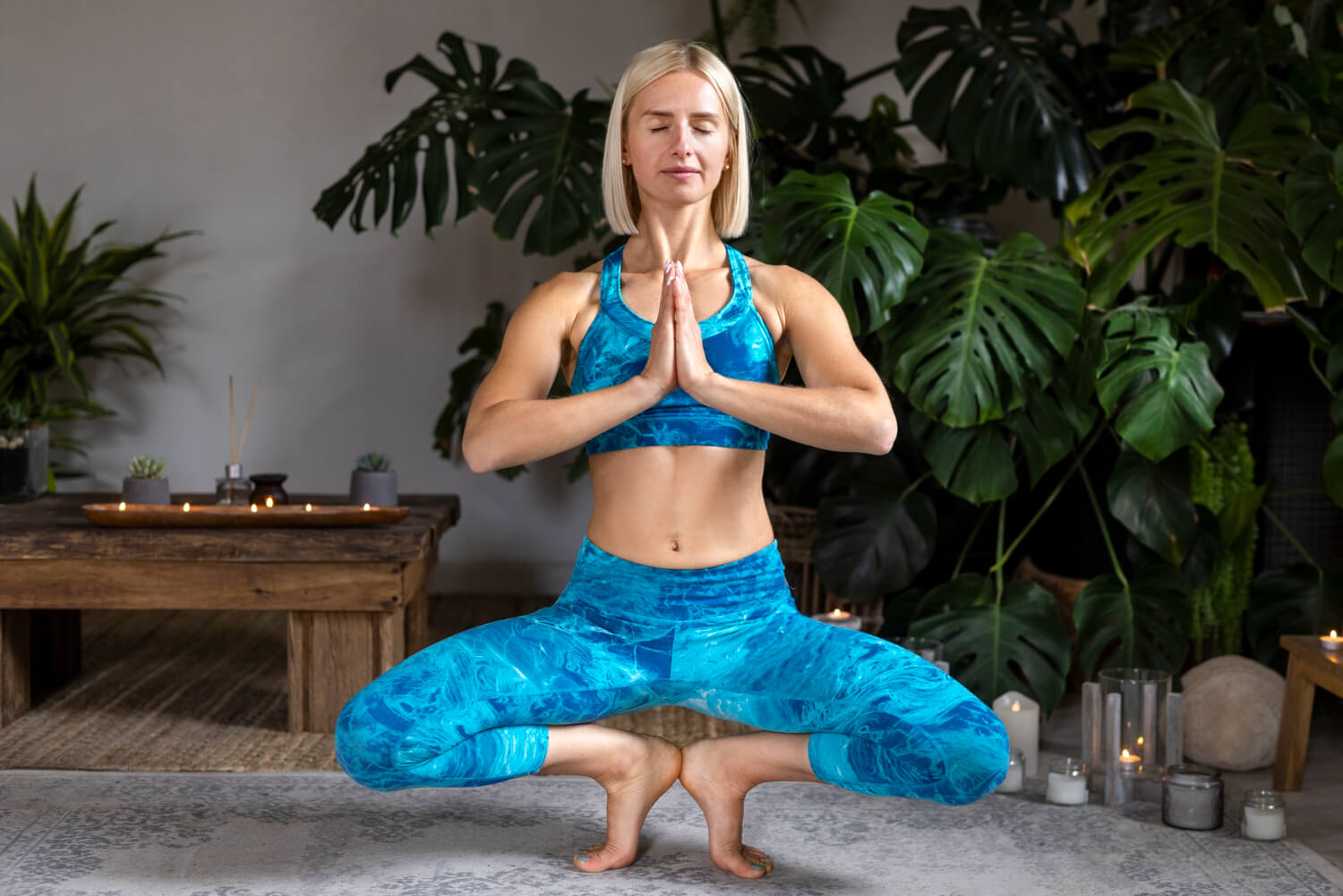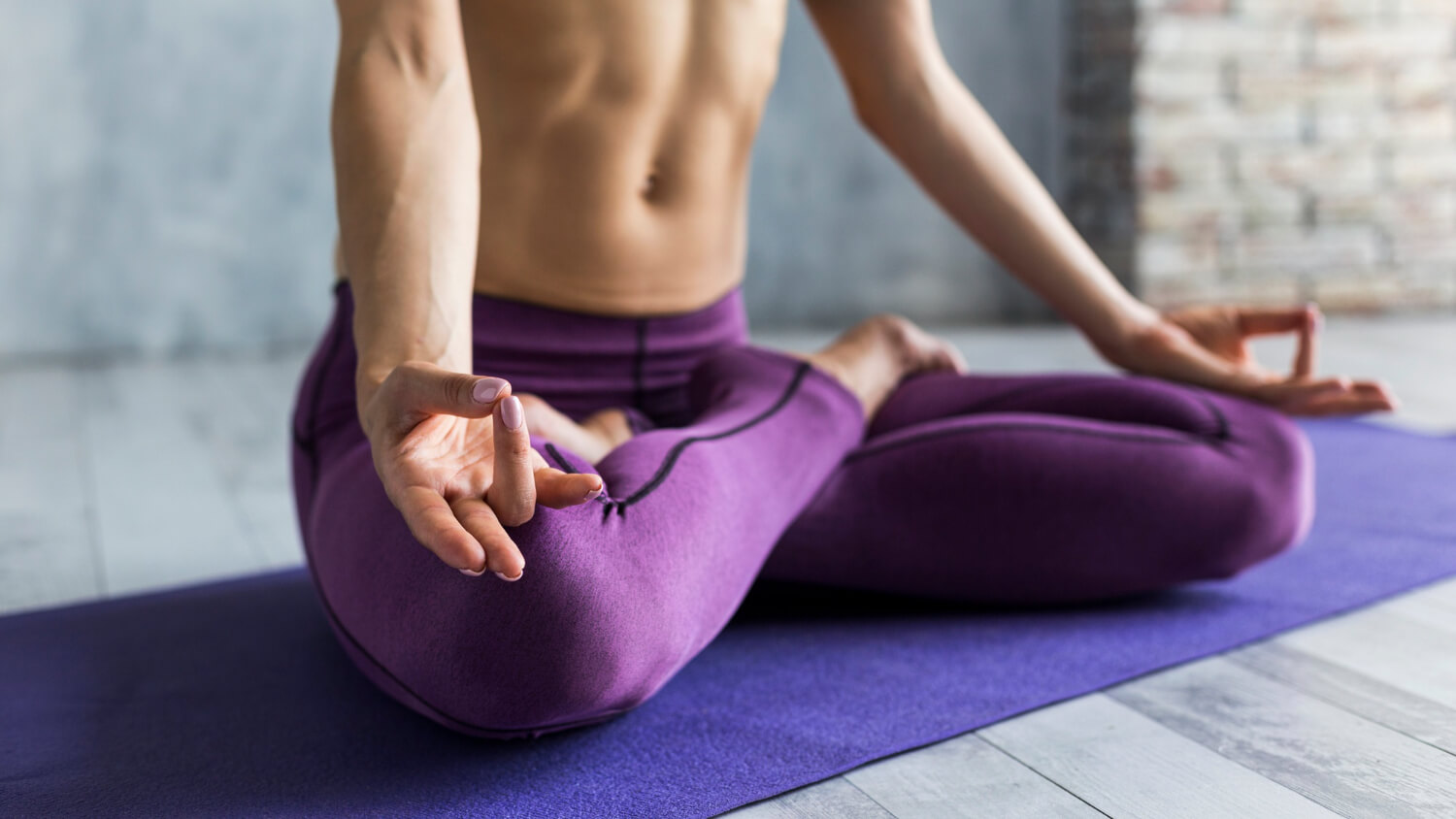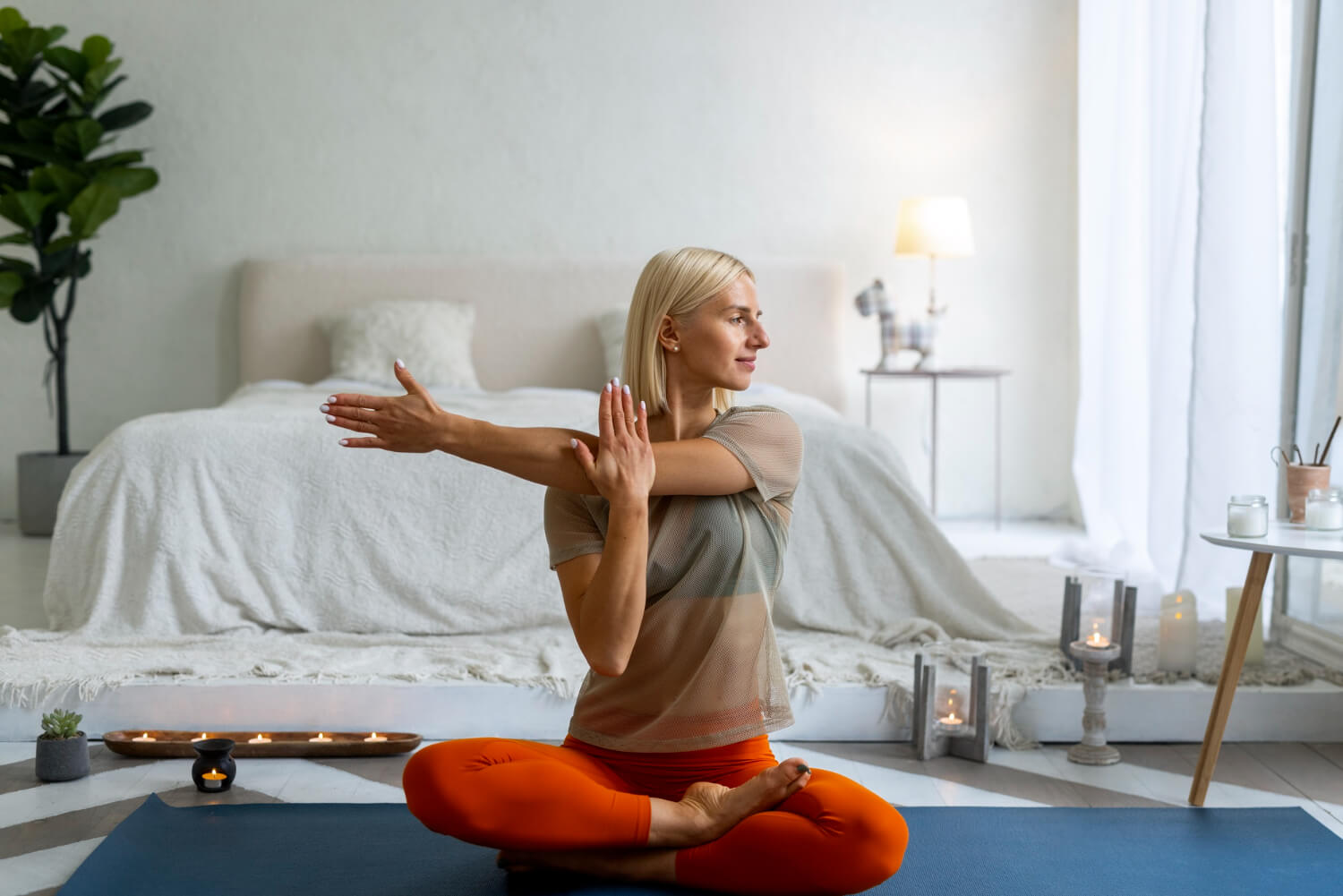Yoga has been around for centuries, but its proven benefits for both body and mind make it more relevant than ever today. Whether you’re looking to boost your flexibility, build strength, or calm your mind, yoga has something for everyone. The beauty of yoga lies in its adaptability; you don’t have to twist into a pretzel or attend a fancy studio to enjoy its rewards. From beginners to advanced practitioners, yoga meets you exactly where you are. Let’s explore how this practice can improve your physical and mental well-being.
Physical Benefits of Yoga
Improved Flexibility
One of the most well-known benefits of yoga is how it helps to improve flexibility. If you’ve ever felt tightness in your hamstrings, hips, or lower back, yoga offers a gentle, consistent way to stretch and loosen up.
Take the Downward Dog (Adho Mukha Svanasana), for example. This foundational pose stretches the hamstrings, calves, shoulders, and even the arches of your feet. Practicing it regularly will improve your range of motion and reduce the likelihood of injuries during other activities, such as running or cycling.
If you’re a beginner, don’t worry if you can’t touch your toes! Flexibility is a skill that takes time to develop. Start where you are, focus on breathing, and you’ll notice steady progress.
Increased Strength
Yoga may appear gentle, but it’s an excellent workout for building strength. By holding poses and engaging your muscles, you build endurance and resilience. Consider Plank Pose (Phalakasana), which strengthens your core, arms, shoulders, and legs. Another great one is Warrior II (Virabhadrasana II), which focuses on building strength in your legs, glutes, and core.
Unlike weightlifting, yoga uses your body weight for resistance. This makes it low-impact, perfect for people with joint pain or those recovering from an injury.
Improved Balance and Posture
Today’s constant screen time often leaves us hunched over and with poor posture. Yoga tackles this issue head-on by improving your balance and alignment. Poses like Tree Pose (Vrikshasana) engage your core and leg muscles while teaching you to stand tall. Over time, yoga creates awareness of how you carry yourself, helping you stand, sit, and move in a more aligned way.

Additionally, better balance isn’t just helpful for yoga class; it’s essential in daily life, particularly as we age. A stronger sense of balance reduces the risk of falls and improves coordination.
Enhanced Cardiovascular Health
Yes, yoga can even benefit your heart! While gentle forms of yoga like Hatha improve circulation, more dynamic styles like Vinyasa or Power Yoga can elevate your heart rate and provide a cardiovascular challenge. Studies have shown that yoga can reduce blood pressure and lower “bad” LDL cholesterol, supporting overall heart health.
Try flow sequences such as the Sun Salutation (Surya Namaskar) for cardio-friendly yoga practice. Moving rhythmically through these poses increases your heart rate while improving flexibility and strength.
Mental Health Benefits of Yoga
Stress Reduction
Life is busy and often overwhelming, but yoga provides a much-needed pause. When you practice yoga, you combine movement with mindful breathing, which naturally lowers cortisol levels (the stress hormone). Scientific studies consistently highlight yoga’s ability to reduce stress and anxiety.
Try restorative poses like Child’s Pose (Balasana) or Legs-Up-The-Wall (Viparita Karani) for gentle stress relief. These poses encourage relaxation by calming the nervous system and focusing your mind on the present moment.
Greater Mental Clarity and Focus
Have you ever left a yoga class feeling like your mind is clearer and lighter? That’s because yoga creates space for mental clarity. Focusing on your breath and body in each pose trains your mind to concentrate, a skill that carries over into daily activities like work and decision-making.
One example is Alternate Nostril Breathing (Nadi Shodhana), a simple yet effective breathing exercise that balances both brain hemispheres. This can center your mind, leaving you more alert and focused.
Helps Combat Anxiety and Depression
Yoga has been shown to positively impact mood and reduce symptoms of anxiety and depression. Combining physical movement, intentional breathing, and mindfulness creates a safe space to reconnect with your emotions. Additionally, yoga promotes the release of “feel-good” hormones like serotonin and endorphins, naturally lifting your mood.
Not sure where to start? Poses like Happy Baby (Ananda Balasana) or Bridge Pose (Setu Bandhasana) are grounding and accessible for all experience levels, offering both emotional and physical comfort.
Better Sleep

Many of us struggle with sleep, but yoga can help improve the quality and duration of your rest. Slow and relaxing poses before bedtime signal your body to wind down. A short evening sequence with poses such as Reclined Butterfly (Supta Baddha Konasana) or Supine Twist (Supta Matsyendrasana) can melt away tension and prepare you for a calm night’s sleep.
Yoga for Everyone, Anytime, Anywhere
One of yoga’s greatest strengths is its flexibility (pun intended!). You don’t need expensive gear or an advanced fitness level to start practicing. You can modify poses to suit your abilities and gradually deepen your practice over time.
For beginners, consider starting with a gentle yoga class or following an online tutorial designed for new practitioners. If you struggle with mobility, chair yoga offers a seated alternative, making it accessible for older adults or those with physical limitations. More advanced yogis can explore dynamic styles such as Ashtanga or Power Yoga for an extra challenge.

